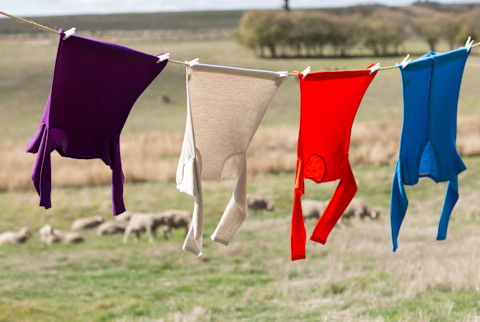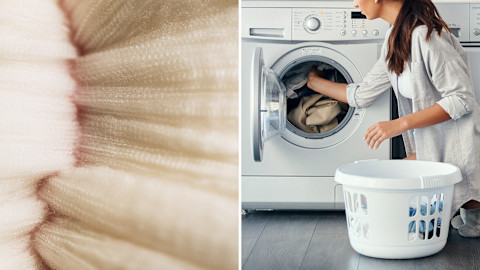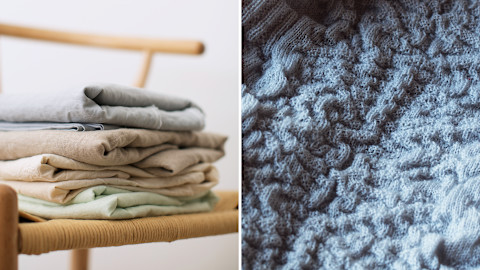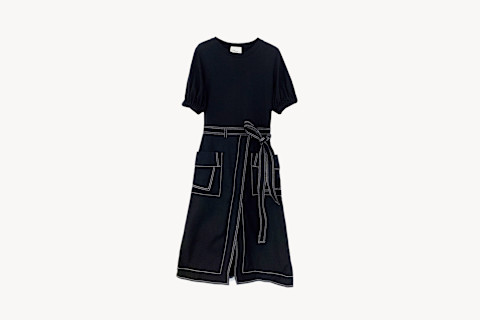How To Build A Wardrobe That Protects Our Planet

The oft-quoted saying, "The most sustainable jacket is the one you have," just about sums up a problem that the fashion industry has been trying to solve for years. Is it possible for fashion's consumption-focused business model to truly tackle its role in our planet's health?
That makes it tricky for us as consumers, too. We can all agree that cutting out single-use plastic and eating mostly plants are positive goals, but what does sustainability look like when it comes to buying new clothes? The good news is "sustainable shopping" doesn't have to be a total misnomer: From supporting Fair Trade brands to buying local or secondhand, we've got a solid number of strategies to help us get started with building a wardrobe that's better for the planet. Covering them all in depth would be enough to warrant dozens of posts, but we take a closer look at one below!
Consider adopting a "fewer, better pieces" philosophy.
Collectively, we're buying much more clothing than we did 15 years ago, enabled by cheaper price tags (which, of course, don't reflect the true cost of the resources and labor that went into making our clothes). According to some reports, 114 billion items of clothing were sold globally in 2019—that's about 15 new garments for every person on the planet—and the bulk of it will be destined for landfill.
As consumers, we do have power when it comes to the decisions we make: Being more intentional about each purchase can help slow down the cycle, even if you don't shop at traditional "fast fashion" retailers. Not sure where to start? Here are four things to consider when stocking your closet to make the most out of reducing, reusing, and recycling:

Clothing quality
Think of the first "R" as reducing the need to continually replace clothes that are (literally) worn out—and it often comes down to a garment's quality and how well it was made. The fabric content matters, so peek at the label: Natural materials like Merino wool, cotton, and linen are durable and resilient, but you can also take a look in your closet to get an idea of which fabrics have held up well for you—and which haven't—over time. Feeling and examining your own clothes is a helpful way to see which garments have gotten better with age, given your lifestyle, laundry habits, and how often you wear them.
A note on natural fabrics: Just because a shirt's label reads 100% linen doesn't mean it's high quality. Fiber authenticity and quality can be assured by a variety of certifications. Woolmark, for example, is the global authority on wool—look out for its iconic logo, which certifies a product's wool content quality and purity. (You've probably seen it on the labels of Merino wool pieces from eco-minded brands including 3.1 Phillip Lim and Tracksmith.) The Woolmark logo guarantees fiber quality and authenticity for all of the material's myriad uses.
- If I stretch this material, does it bounce back to its original shape? Does the fabric feel substantial? Do the seams and stitching feel strong?
- Will this piece easily lose its shape or appeal?
- Could I potentially repair this piece to extend its use?

Care
Every time we machine wash a synthetic garment, microfibers are released into the water, affecting our oceans, wildlife, and eventually our health as well. Microplastic pollution is a problem, but we can help reduce our laundry's environmental impact by considering more natural materials—especially when it comes to the synthetic materials we wash often, like our gym clothes.
What's more, blended, synthetic fabrics often don't retain shape and fit with repeated laundering the way natural fibers can. Australian Merino wool, for instance—which is 100% natural, renewable, and biodegradable in both land and marine environments—isn't just wrinkle-resistant but odor-resistant and naturally breathable, too. It's great at absorbing moisture away from our body to evaporate into the air and keep us dry. This helps keep us cool in warm weather, and warm in cooler weather—a seasonally versatile and environmentally friendly material for both high-end investment pieces and high-performance activewear. That's a win-win.
What's more, according to a recent Nielsen study that dove into the laundry habits of consumers across the world (as part of the Woolmark Company's Global Wardrobe Study), wool items tend to be washed less frequently than clothes made from other fibers, at lower temperatures, to boot, saving you both time and money.
- How many times can I wear this item before washing it?
- Can I get away with an alternative that needs less washing?
- Will this need dry cleaning? Can I wash this in the cold cycle to conserve energy?
- Does it smell as good as new or retain its as-new look and feel after I wash it?
Shop Australian Merino wool pieces, recommended by The Woolmark Company:

Circularity
Circularity is a design approach that cuts out a product's end-of-life and turns it into a resource to make something new (aka, "waste" becomes a resource), and we can help support more closed-loop systems with our clothing.
Some materials, like Merino wool, are made for this. Wool is the most reused and recycled fiber of all common apparel fibers—often getting second, third, or fourth lives thanks to its durability as a garment. Beyond that, wool can be reused in insulation for cars, mattresses, and other items, too. And if wool garments end up getting tossed out, the fabric—as a natural and biodegradable fiber—can decompose in a matter of years, leaving little impact on the earth.
- Can this material be recycled or reused in any way?
- Would I be able to donate or resell this piece?
- Does this brand have a take-back program?

Company
More and more brands are actively changing up how they operate to be kinder to the planet. Supporting the ones that do is a vote for more planet-minded practices in the industry.
- What fabrics and fibers do they use?
- How do they handle their packaging and shipping?
- How do they manufacture and treat their employees?
- How do they approach the waste they produce, or do they put in the effort to lower it?
Just like with all other choices we make, remember that the best sustainable shopping practices are the ones you can actually keep doing over time. Call it what you like—slow fashion, conscious fashion, ethical fashion—it's all just a way of consuming clothing in a more thoughtful and mindful way. If you look at the ingredients of a food item before you buy and eat it, do the same with your clothing—become a label turner!



